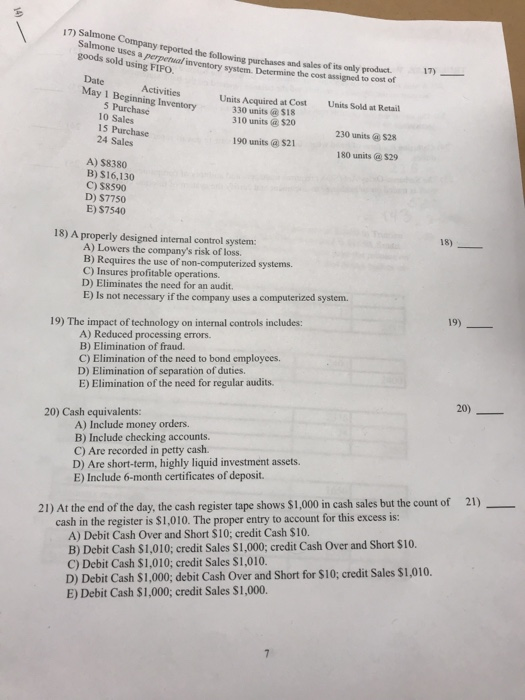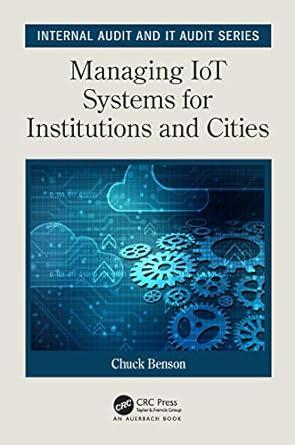14) 14) Given the following information, determine the cost of the inventory at June 30 using the LIFO perpetual inventory method. 46 units at $20 each June 1 Beginning inventory June 15 Sale of 38 units for $50 each 38 units at $25 cach June 29 Purchase The cost of the ending inventory is: A) $950 E) $760 D) $1150 B) $920 C) $1110 15) 15) A company has beginning inventory of 13 units at a cost of $27 each on February 1. On February 3, it purchases 37 units at $29 each, 17 units are sold on February 5. Using the FIFO periodic inventory method, what is the cost of the 17 units that are sold? A) $467 B) $459 C) $471 D) $496 E) $486 16) A company uses the periodic inventory system and had the following activity during the current monthly period. 16) November 1: Beginning inventory 105 Units @ $10 November 5: Purchased 105 Units @ $30 November 8: Purchased 55 Units @ $22 November 16: Sold 146 Units @ $70 November 19: Purchased 40 Units@ $30 Using the weighted-average inventory method, the company's ending inventory would be: A) $2250 B) $1050 C) $3446 D) $3460 E) $2410 17) Salmone Company reported the following purchases and sales of its only product Salmone uses a perpethwal inventory system. Determine the cost assigned to cost of goods sold using FIFO. 17) Date May 1 Beginning Inventory 5 Purchase 10 Sales 15 Purchase Activities Units Acquired at Cost 330 units@S18 310 units@S20 Units Sold at Retail 230 units@S28. 190 units @ S21 24 Sales 180 units @$29 A) $8380 B) $16,130 C) $8590 D) $7750 E) $7540 18) 18) A properly designed internal control system: A) Lowers the company's risk of loss. B) Requires the use of non-computerized systems. C) Insures profitable operations D) Eliminates the need for an audit. E) Is not necessary if the company uses a computerized system. 19) 19) The impact of technology on internal controls includes: A) Reduced processing errors. B) Elimination of fraud. C) Elimination of the need to bond employees. D) Elimination of separation of duties. E) Elimination of the need for regular audits. 20) 20) Cash equivalents: A) Include money orders. B) Include checking accounts C) Are recorded in petty cash D) Are short-term, highly liquid investment assets. E) Include 6-month certificates of deposit. 21) At the end of the day, the cash register tape shows $1,000 in cash sales but the count of cash in the register is $1,010. The proper entry to account for this excess is: A) Debit Cash Over and Short $10; credit Cash $10. B) Debit Cash $1,010; credit Sales $1,000; credit Cash Over and Short $10. C) Debit Cash $1,010; credit Sales S1,010 D) Debit Cash $1,000; debit Cash Over and Short for $10; credit Sales $1,010. E) Debit Cash $1,000; credit Sales $1,000. 21) 7








